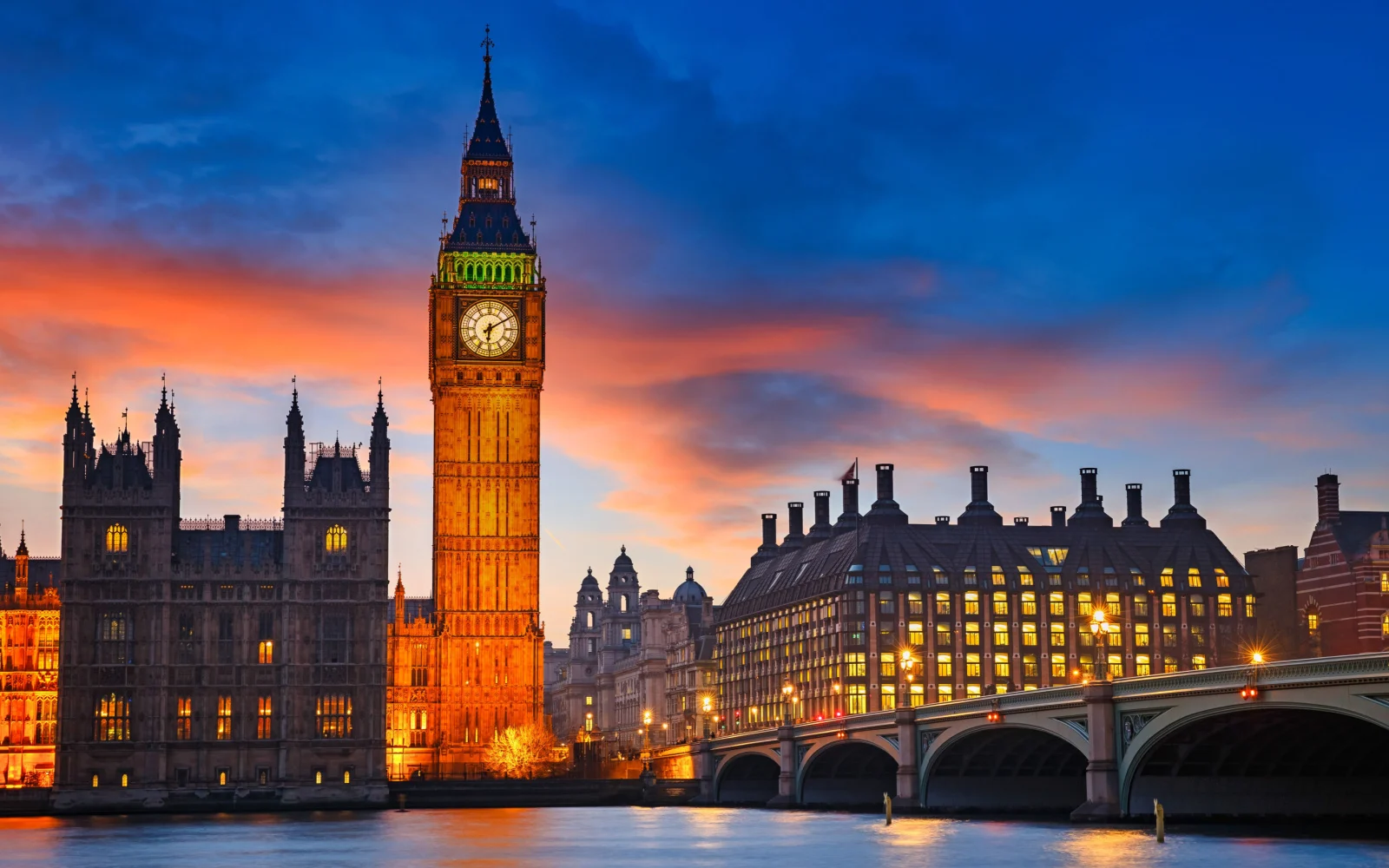London, the capital of the United Kingdom, might as well be one of the capitals of the world. It is the center of global literature, fashion, trade, and so much more.
It’s no wonder that the city receives over 20 million international visitors each year. London is packed with famous attractions such as the Tower of London and Big Ben.
It has many amazing museums, such as the British Museum and the Victoria & Albert Museum — many of which are free to enter. Lovers of British pop culture can visit the Sherlock Holmes Museum or the Platform 9 3/4 from the Harry Potter movies.
The most fun thing to do in London may be to try and live like a Londoner.
Try the countless restaurants of international cuisine, read in a café, shop at independent boutiques and markets, or catch amazing live music or theater.
London truly has something for everyone. London is a wonderful place to visit, but it is still a big city, with problems you might find in any big city, including safety challenges.
Before planning your trip to London, research safety information you may need to know, which you can find in this guide.
Is London Safe to Visit in 2025?
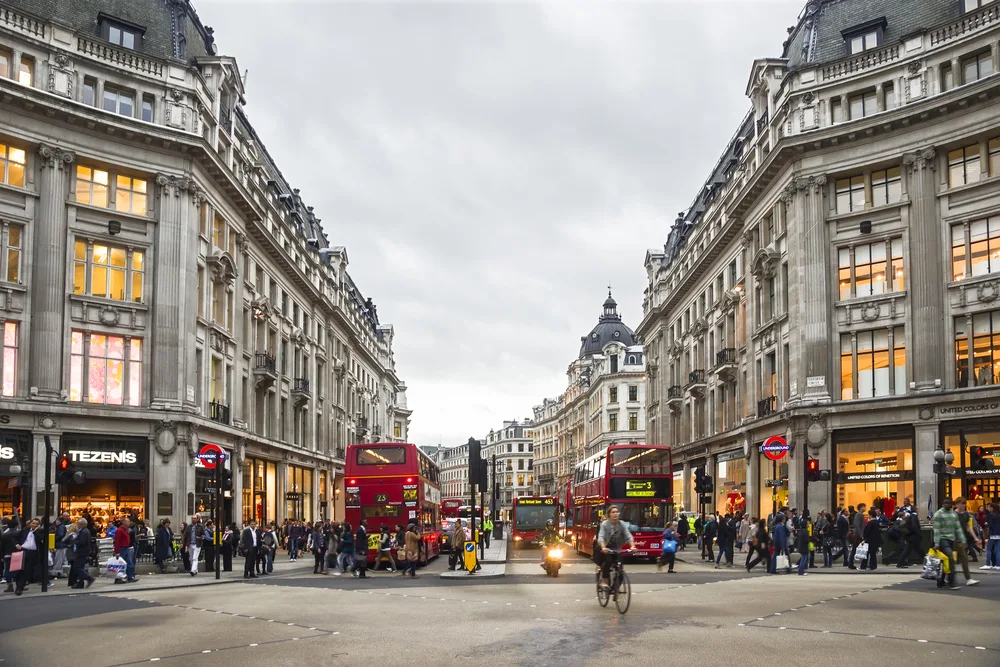
LONDON-SEP 20:View of Oxford Street on September 20, 2011 in London. Oxford Street is a major road in the West End of London, UK/Elenaburn/Shutterstock
Yes. London is safe to visit as long as you use common sense when moving around the city. For a big city, it has a moderate crime rate and few other dangers.
However, crime does exist, and you don’t want to be the victim of a theft or other incident while abroad. London is located in the United Kingdom, a country where most travel advisories say you should exercise some caution.
The New Zealand government puts the United Kingdom under a Level Two travel advisory, as do many other governments. Many of the risks listed in travel advisories for the United Kingdom are present in London, which is the country’s biggest city.
These include:
- Petty crime
- Mugging
- Knife violence
- Civil unrest
- Terrorist
However, although there is a risk of these incidents occurring, that doesn’t mean they are bound to occur during your trip. Your government just has a duty to warn you about the risks of going to a new place and about what might happen, not what definitely will happen.
Plus, London is a big enough city that an incident could happen in one neighborhood and not affect people on the other side of the city.
As the capital of the nation, London sees a lot of protests. There are frequent demonstrations, such as recent protests by Just Stop Oil climate activists. The vast majority of protests in London are peaceful, if sometimes inconvenient.
It is a good idea to avoid protests while traveling, just because you may not know enough about the local context to truly know what you are supporting, but the risk of a protest affecting your travel plans is rare.
There have been cases of more violent protests in London before. In 2011, the London riots lasted for 5 days after the police killing of a civilian, Mark Duggan.
This was the most recent such event, and it occurred over a decade ago, so the risk of civil unrest while you are in London is fairly low. More concerning is the risk of terrorism.
Most countries such as the United States mention terrorism as the reason they advise increased caution in the United Kingdom. The United Kingdom itself lists its terrorism threat level for most of the country as “substantial,” which is level 3 out of 5.
London, as the capital of the country and the largest city, is the most likely target for terrorists. It’s also the place where most high-profile past terrorist attacks have occurred.
In 2017, there was a deadly terrorist attack on London Bridge that killed eight people.
In 2019, there was another deadly attack where two people were stabbed to death in the same area. Terrorism is unfortunately possible in London, but the risk is present in many major cities around the world.
You can take some precautions to protect yourself, such as being vigilant in crowded areas or leaving an area that your instincts tell you is unsafe.
However, you shouldn’t let fear of a terrorist attack that is statistically unlikely to affect you ruin your trip. It might also put your mind at ease to think about the safety measures that UK authorities have taken in recent years.
Crowded, important areas in the city are now packed with police officers and security personnel. The government has also put barricades on major bridges and pedestrian areas to prevent terrorists from using vehicles in their plans.
Overall, London is a big city with big city problems, but the savvy traveler can easily have a safe visit with a few basic precautions.
Crime in London
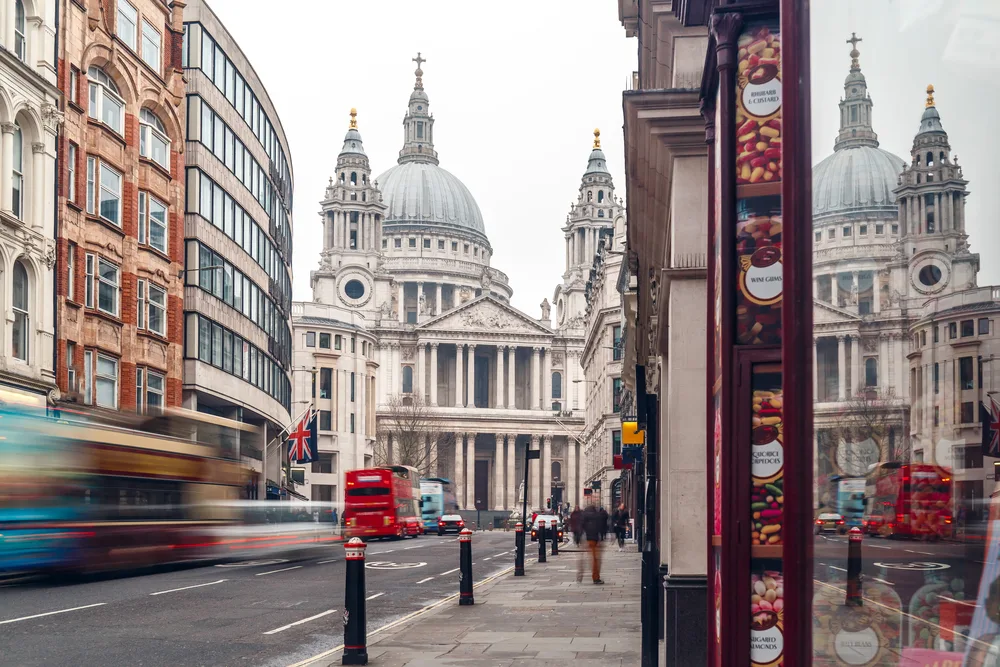
Alexey Fedorenko/Shutterstock
Crime is the biggest concern for most travelers and residents alike in London when they think about safety. It’s the most common problem you will encounter when you are in town.
The Metropolitan Police publishes annual crime statistics that can give us a picture of what crime looks like in the city. The overall crime rate in London is about 112 incidents per 1,000 people.
Each year, the Metropolitan Police records over 1 million offenses — but keep in mind that this is for a city with a population of about 9 million people.
The most common type of crime in London is theft, which makes up 26% of total crimes committed in London. Common forms of theft include shoplifting and bike theft.
Theft from a person, or pickpocketing, makes up 24% of total thefts committed in London. Other property crimes such as thefts from vehicles are also common in London. Violent crimes make up about 24% of total crimes committed in London.
However, the most common violent crime is violence without injury, so the intent to commit violence.
In the period from July 2022 to August 2023, London experienced 116 homicides, which is a fairly small number for a city of its size (although every homicide is a tragedy). In fact, London has a much lower violent crime rate than many other global metropolises.
Although crime is a risk in London, the risk is not that high, especially of more dangerous crime. While news reports may portray London as a dangerous place, the reality is different.
Petty Theft
The massive crowds of London provide cover for a veritable army of thieves. Pickpockets and bag snatchers can take advantage of a moment’s inattention and make off with your valuables.
All forms of petty theft happen in London, although cellphone theft is apparently one of the most common forms. The Canadian government warns about the prevalence of theft in London in its travel advisory for the United Kingdom.
It lists common areas for theft, such as the Underground and other forms of public transportation, underground passageways, café terraces, and popular tourist attractions such as Piccadilly Circus.
The best way to protect yourself from theft in London is to make sure that you are not singling yourself out as a potential target.
Don’t flash around lots of cash, expensive jewelry, or hold your phone in your hand as thieves will interpret that as you being a lucrative target. Don’t put valuables where someone can easily steal them without you noticing.
Try to follow the lead of local Londoners to blend in. If you get lost, duck into a store or café to look up directions instead of standing in the street or unfurling a map.
Walk with purpose, especially on public transportation. If you notice locals avoiding a certain area or group causing a distraction, follow their lead.
Theft happens in London because with so many people around, there are bound to be some criminals and some incidents. However, basic precautions are usually enough to deter thieves.
Knife Violence
If you read newspaper headlines about London, knife violence often dominates the headlines. News articles report on the growth of violence, calling it a crisis. The knife violence rate is 1.6 incidents per 1,000 people.
It is true that London, like many big cities, experiences violent crime. The Australian government mentions the risk of violent crime in big cities such as London in its travel advisory for the United Kingdom.
However, most incidents of knife violence are targeted crimes where the parties involved usually knew each other or had some connection.
Knife violence tends to affect local youth, especially those in unaffected areas. Random tourists that are likely to cause a massive uproar if they are targeted are rarely victims of this crime. When tourists are victims of a violent crime, it is usually robbery.
In fact, many incidents of knife violence are tied to robbery, which is why the borough with the highest number of incidents in London is the central, wealthy borough of Westminster.
You can minimize your risks of this crime by taking basic precautions. As mentioned above, don’t stand out by flashing expensive items — many of the victims during a recent crime wave in London were targeted for their expensive watches.
Don’t walk down empty side streets at night, even in neighborhoods you might consider “safe.” If you’re alone after dark, take a taxi instead of public transportation.
Avoiding Bad Areas
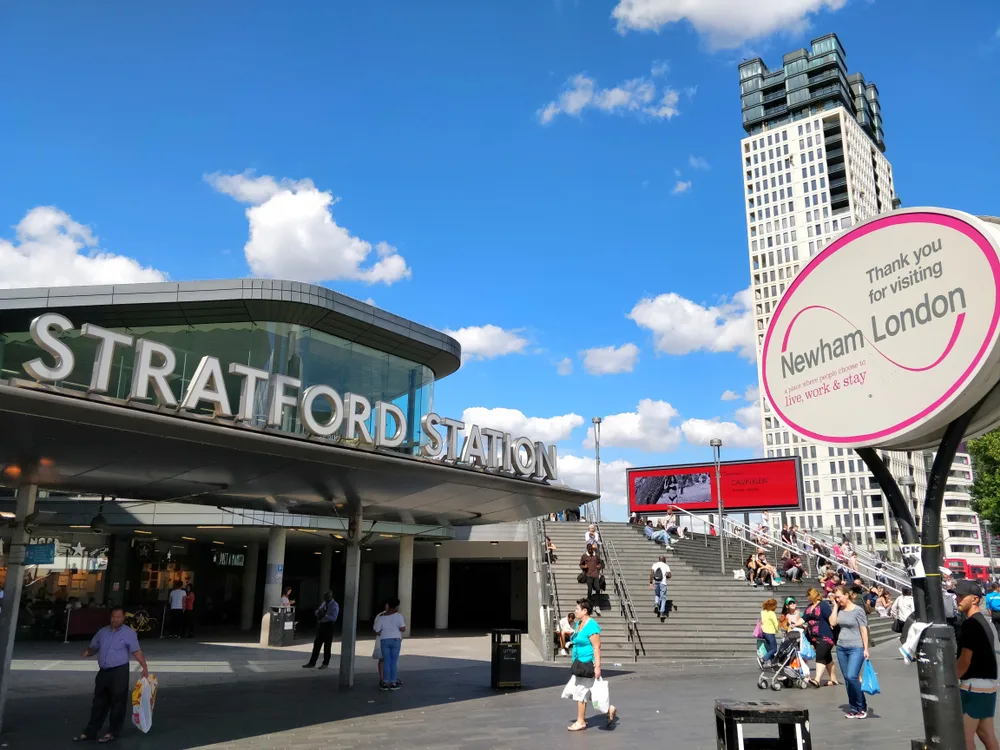
Stratford station entrance on a sunny day. Stratford train station next to Newham London sign. Stratford in Newham London. June 2018/Ben Latham/Shutterstock
Certain areas of London have far higher rates of crime than others. The most dangerous parts of London are:
- Tower Hamlets
- Southwark
- Islington
- Croydon
- Newham
However, even these neighborhoods are safe during the day and if you take the right precautions. Up-and-coming areas such as Dalston and other parts of East London are safe to visit, but thefts can happen.
The part of London with the highest crime rate is actually the wealthy central borough of Westminster.
This borough has lots of tourists, wealthy residents, and businesspeople, which means that theft rates are fairly high. It just goes to show that sometimes your perception of what is and isn’t safe may be off.
Things to Consider
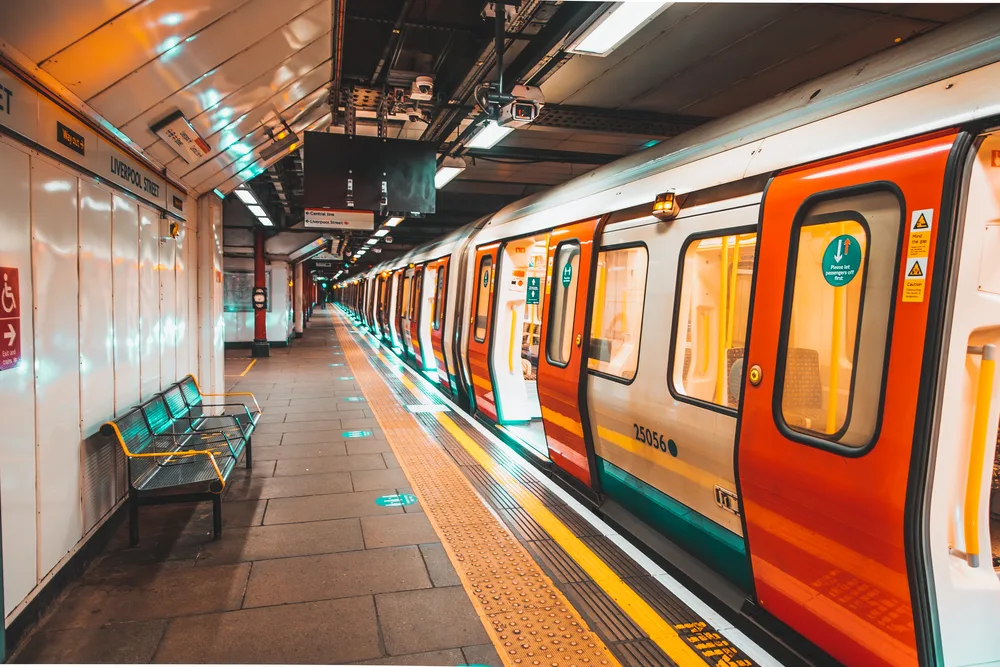
London UK January 2021 Underground Tube metro train stopped on a platform station in London, doors open with no people/Antonio Batinic/Shutterstock
Here are a few additional safety tips to keep in mind when in London:
- Look right before crossing the street. If you come from a country that drives on the right, you may be used to looking in the other direction! Remember that in the UK, they drive on the left, so you have to look the other way to avoid getting hit on a crosswalk.
- Stand on the right, walk on the left. Londoners are busy people, so follow etiquette such as not blocking the left side of an escalator, not stopping in the middle of the street, and not cutting in line.
- Put your phone in a secure place. Phone theft is common in London, so avoid walking around with it in your hand or in an open bag.
- Plan your trip ahead of time. Look up where you are going and how to get there so you don’t stick out like a lost tourist or get in people’s way in public transportation. Google Maps or Citymapper are helpful resources.
Frequently Asked Questions
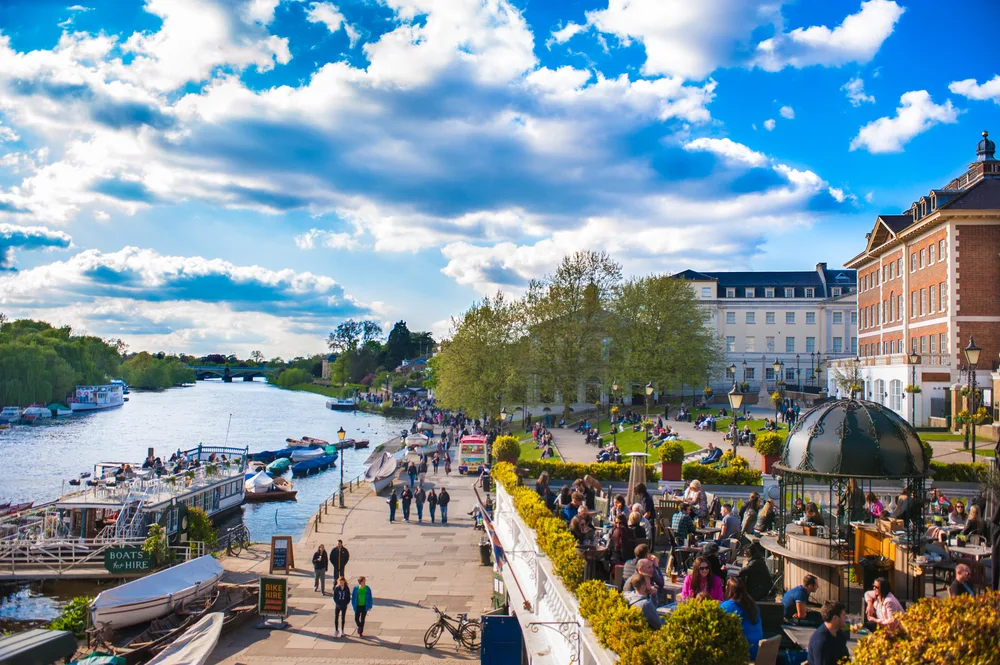
RICHMOND UPON THAMES, UK – APR 19: People enjoy the sunny weather in Richmond Upon Thames near London on April 19, 2014. The town is in proximity of a large number of parks, including Richmond Park/Pcruciatti/Shutterstock
Here are a few common questions previous visitors to London have asked before:
Is it safe to walk in London at night?
London is one of those cities that never sleeps, so there are plenty of areas where there are other people around at all hours. However, follow precautions to stay safe at night such as avoiding poorly lit side streets and not walking alone if you can avoid it.
How safe is London in 2023?
London in 2023 is a safe city. Although crime happens, crime rates are not very high, especially when compared to other big cities.
What is the safest area in London?
Parts of London are called boroughs. The safest borough in London is Richmond Upon Thames, a sleepy suburb in Outer London.
Which is safer: London or Paris?
London and Paris have similar safety levels. Paris may have lower overall crime levels, but it has higher levels of tourist-targeted crime so many people feel safer in London.
Is the London Underground safe at night?
The London Underground is safe at night because it has people at all hours, including lots of safety officials. However, it doesn’t run at all hours of the night, so keep that in mind so you don’t get stranded.
So, Is London Safe to Visit?
Like in any big city, you will have to take precautions to keep your valuables safe in London, especially your phone. However, the risk of something worse than theft happening to you is fairly low.
So, with so much to see and do and a relatively safe environment, what are you waiting for — book your trip today and experience for yourself all that London has to offer. Happy travels!



